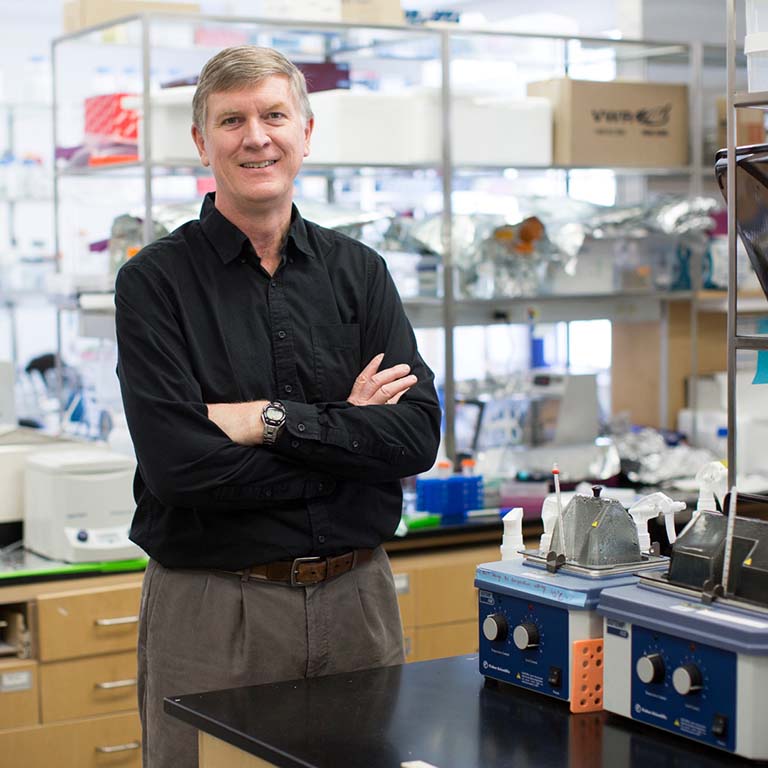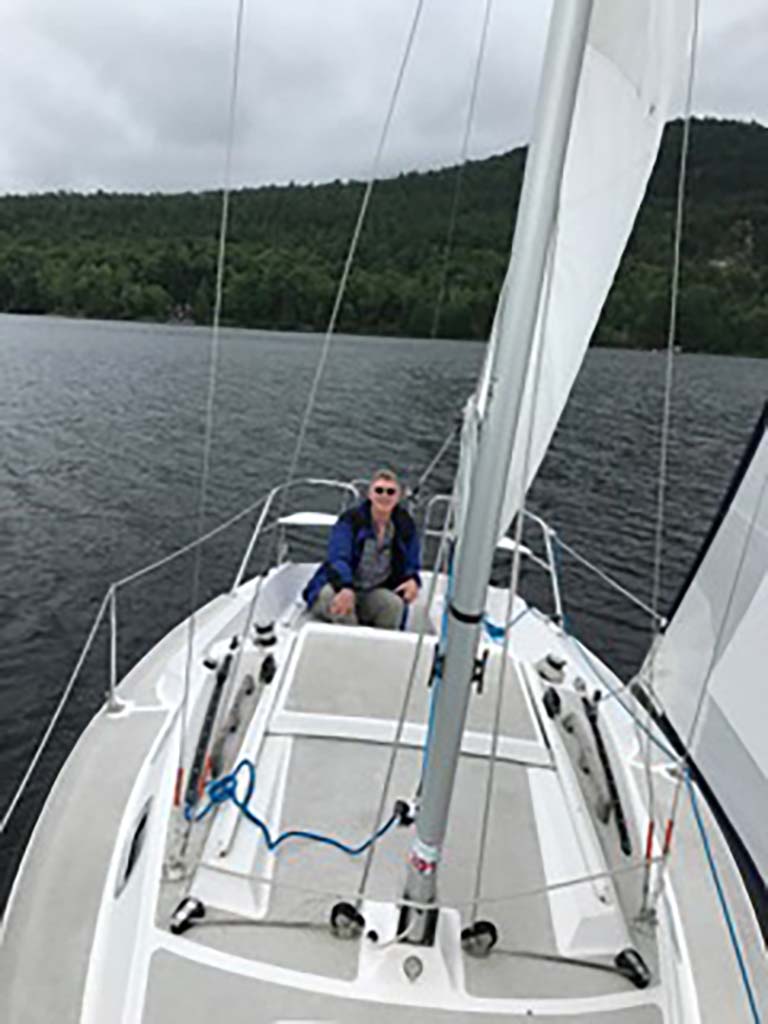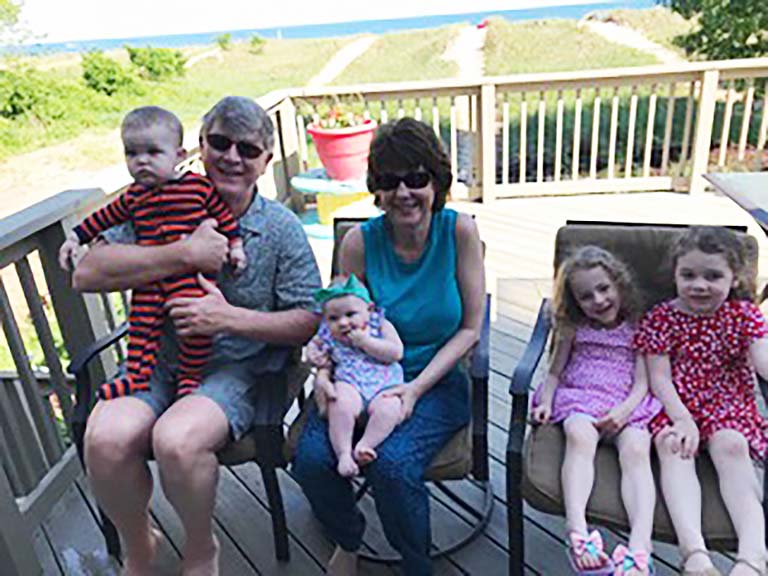Get to know Craig Pikaard, an HHMI Investigator at Indiana University. When he's not following his scientific curiosity or encouraging his lab members' independence, Craig enjoys sailing, cycling, and spending time with his grandchildren.
Q: What is your research focus?
A: I've always been interested in how genes get switched on and off. In recent years, I've been focused on how genes are turned off, or gene silencing. My lab is studying several aspects of gene silencing using plants—specifically, Arabidopsis thaliana (thale cress], a small flowering plant—as our model system. One main project has to do with a phenomenon called RNA-directed DNA methylation, used to silence invading viruses or virus-like transposable elements, which are also known as transposons or "jumping genes" because they can move to new locations in the genome, and they often land inside other genes and knock out their functions. In the RNA-directed DNA methylation process, small bits of RNA, the molecule that carries out the genetic functions encoded in DNA, can cause methyl groups (CH3, consisting of one carbon and three hydrogens) to be added to matching DNA sequences of transposons or viruses, inhibiting their genes from being turned on and keeping them in check.
All genes need to be turned on and off at the right times. We have the same genes in every cell, but each part of our body looks different because different genes are switched on or off in different types of cells. When gene silencing happens at the wrong time, that can cause problems. The gene silencing process often goes awry in cancerous cells, for instance.
My interest in RNA-directed methylation grew from my identification, about 20 years ago, of two new types of RNA polymerase, which are enzymes that convert DNA information into RNA. The two enzymes turned out to responsible for generating the RNAs that carry out RNA-directed DNA methylation. We've done a lot of work to understand how the RNA polymerases function and interact with other enzymes to gain a fundamental understanding of how silencing happens. With that basic knowledge, hopefully, there could be applications. But we're chasing this purely out of intellectual curiosity.
Q: How did you get interested in science and this topic?
A: I've always loved the outdoors and nature. I think my real interest in plant biology came when my family moved to Bermuda from New Jersey for two and a half years when I was very young. I went to first and second grade in Bermuda and was amazed by all the exotic, amazing plant life around me, as well as the interesting creatures and ocean life.
In high school, I was interested in everything; I considered law, politics, writing novels, geology, oceanography … I applied to college as a geology major but then switched to enroll as an English major. Within a few semesters, I realized that my interest in science was not going to be satisfied by non-major courses, so I switched to horticulture, with the idea of going into the home and garden business with my dad, who had recently bought a hardware store. But then, I discovered physiology and biochemistry and decided to go to graduate school. When I first went to grad school, it was to do lipid biochemistry (the study of fatty acids), but I switched quickly to stress physiology. That's when I discovered molecular biology, which is what really hooked me, and there's been no looking back since that point.
But my work has always evolved—I worked with plants for my doctoral studies, and then did my postdoc at the Fred Hutchinson Cancer Research Center to study gene activation in Xenopus laevis, the African clawed frog. When I first started my own lab at Washington University, I started off studying gene activation in both plants and Xenopus but eventually dropped the frog work and began our studies of gene silencing. Now, at Indiana University, where I've been since 2009, we focus solely on gene silencing processes in plants, using a series of different approaches. I think I've been reinventing myself every five years or so for as long as I can remember. I like to pursue what interests me.
Q: How do you spend a typical workday?
A: Of course, there's the research. But there is a lot of e-mail to answer, some administrative work for committees I'm on at the university, like student
thesis committee meetings and young faculty mentoring committees, and duties I have as an editor for various journals.
The best part of my week is when I meet with my lab members. I have a great team with a lot of very independent people—mostly postdocs, some graduate students and undergrads, and one high school student. Every week, we have team meetings in which people working on related projects discuss their recent progress, and we also have another lab meeting in which one person presents their work more in depth.
I try to have a very democratic lab where everybody asks questions and speculates wildly to see if we can devise new experiments. I want to give my lab members a lot of independence to train them for the future. I take a lot of pride in former lab members who are off running their own labs.



 The College of Arts
The College of Arts